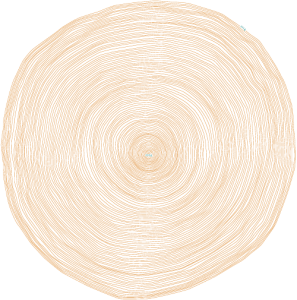If you want to read the latest Atwood, can you wait a while? Say, 100 years?
September 20, 2015, by Caroline Leech
As we launch the 35th season of the Inprint Margarett Root Brown Reading Series tomorrow with National Book Award winner Jonathan Franzen, reading from his latest novel Purity, this story reminds us how fortunate Houston is to have the world’s great literary figures make a stop in our city. Both Margaret Atwood and David Mitchell have appeared in front of sell out audiences as part of the Inprint Margarett Root Brown Reading Series. Lucky for us, some of their work won’t be read for a 100 years!
If you want to read Margaret Atwood’s latest piece of writing, Scribbler Moon, you will have to wait a while, say, for another century.
Atwood is the first contributing author to the Future Library project, an artwork created by Scottish artist Katie Paterson for The City of Oslo. Paterson has planted a thousand trees in a forest just outside the city where they will be looked after for one hundred years, until 2114. In each of those hundred years, one author will be commissioned to write a manuscript of some sort and that piece of writing will be placed, unpublished, in a secure and specially designed room in the new public library being built in Oslo. They will all remain unread until the collection of one hundred manuscripts is complete. Then in 2114, the trees will be cut down and the wood will be used to supply paper for a special anthology of books in which one hundred years of writing will be published.
Canadian author, Margaret Atwood delivered her manuscript to Katie Paterson last week, deep in the heart of the Future Library itself, in the Nordmarka forest just outside the Oslo. It remains a secret, however, as to whether it is a poem, short story, novel or memoir. No one else will know until 2114.
“There’s something magical about it,” Atwood said as she handed over her work. “It’s like Sleeping Beauty. The texts are going to slumber for a hundred years and then they’ll wake up, come to life again. It’s a fairytale length of time.”
Accepting the sealed silver box containing the precious manuscript, Katie Paterson said, “It is my dream that Margaret Atwood is writing for Future Library. I imagine her words growing through the trees, an unseen energy, activated and materialized, the tree rings becoming chapters in a book.”
The next contributor to Future Library will be David Mitchell, author of Cloud Atlas and The Bone Clocks. He said, “Imagine if the Future Library had been conceived in 1914 and a hundred authors from all over the world had written a hundred volumes between then and today, unseen until now. What a human highway through time to be a part of. Contributing and belonging to a narrative arc longer than your own lifespan is good for your soul.”
Katie Paterson has created an image to symbolize the Future Library. A tree trunk with a tiny blue “2014” at its center, one hundred growth rings expand until, at the top right outside edge, there is another tiny blue date, 2114.
As the next hundred years pass, future contributors will be announced year by year. Some will be familiar to us now, though it is startling to realize that many will not even have been born yet.
Both Margaret Atwood and David Mitchell have presented their work to Houston’s literary audience as featured writers in Inprint’s Margarett Root Brown’s Reading Series, in 2012 and 2014 respectively
For more information, visit Future Library here.



